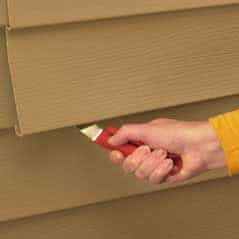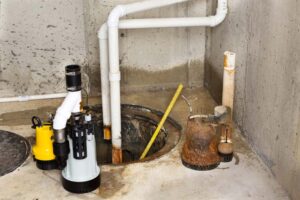As severe weather continues to dominate the news, it pays to take heed and prepare for the worst, even if your home isn’t in the direct path of current storms. Protecting your home from heavy rain can decrease the odds of damage caused by water that leaks through the roof and ceilings, floods the ground floor or basement, and compromises the home’s structure.
Preventing wind damage is equally important, as flaws in your home’s roof or entry points (like garage doors) can result in serious damage if high winds are predicted.
Here are 12 ways to get your house in order if you live in or near regions where storms and heavy rains are commonplace.
How to Prepare Your House for Heavy Rain and Wind
- Clean your gutters and downspouts. When gutters and downspouts clog with leaves and debris, water overflows and spills down where it can damage walls and footings. Please see Rain Gutter Cleaning & Maintenance. If your house is beneath many trees, it’s smart to clear the gutters at the beginning of the season, and then clean them again after the first rain to remove leaves and debris that wash down from the roof.
Gutter cleaning kit attached to leaf blower allows blowing out the gutters from below. Worx® - Check your roof, skylights, and flashing. The roof is the most obvious point of entry for rain. Please see How to Find & Fix a Roof Leak. If checking your roof is more than you want to handle yourself, get free bids from local asphalt shingle roof repair pros.
Leaks often occur at the flashing in valleys or where pipes penetrate the surface. Seal these with asphalt roofing cement. Ernest R. Prim / Shutterstock.com - Repair gutters and downspouts. Fix loose, sagging, or leaking gutters and make sure downspouts carry drainage well away from the house. For more, see How to Fix Rain Gutters & Downspouts.
Bonita R. Cheshier / Shutterstock.com - Inspect the house siding. Check for damage, cracks, and holes. Seal up leaks with paintable or clear caulk. Make sure the paint is in good condition. If it isn’t, consider getting the house painted before winter really sets in.
- Weatherstrip windows and doors to seal out drafts and minimize heat loss. For more, see Weatherstripping Windows and/or Door Weatherstripping Options.
V-Strip Weatherstripping - Prepare or install storm doors and windows. If your home has a combination storm/screen door with interchangeable glass and screen panels, switch from screens to glass (see Screen & Storm Door Buying Guide). Spray a little WD-40 on the storm door’s hinges and latches. Be sure the door closer is adjusted and working smoothly.
Combination Storm and Screen Door ©Don Vandervort, HomeTips - Need a sump pump? If your basement or crawl space is susceptible to flooding, consider buying a sump pump. If your home already has one, be sure it is in good working order. For more, see Sump Pumps Buying Guide.
©Ozgur Coskun / Shutterstock.com - Consider buying a generator. In the event of a power outage, a portable emergency generator can provide enough power to keep a few important lights and appliances running. A whole-house standby generator will automatically kick-on to keep the keep the whole house powered.
1000-watt Generator DuroStar - Cover and protect outdoor furniture, barbecues, outdoor equipment, and firewood with heavy tarps. Secure the tarps with ropes or heavy objects such as bricks. Learn how to create a waterproof space under your deck.
During the off season, wrapping your AC condenser unit with a tarp will help keep it clean for next year. IkeHayden / Shutterstock.com - If your property is in danger of being flooded, have materials such as sandbags or concrete edgings on hand to divert water to drainage areas.
- Have trees trimmed, especially if they’ve become weakened by drought. When laden with rainwater, weak trees can snap or become easily uprooted.
- Be ready for the worst. Assemble a disaster supply kit, and have it readily accessible. Scan and store important documents on thumb drives or hard drives located away from your home (or on the Cloud). Consider flood insurance; be aware that your home may become flooded even if it isn’t located in a high-risk area. Please see What To Do During a Storm Disaster.

















 Don Vandervort writes or edits every article at HomeTips. Don has:
Don Vandervort writes or edits every article at HomeTips. Don has:




